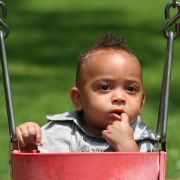
Theory of Mind
Theory of mind is typically defined as the ability to understand the thoughts, beliefs, desires, and emotions of other people. This understanding allows individuals to predict how others will feel, act, and think in a given situation.
The ability arises from a “body of conceptual knowledge that underlies access to both one’s own and others’ mental states,” according to psychologist and professor Breate Sodian.
Theory of mind is a foundational mechanism for navigating social situations. To successfully interact with other people, an individual must have some idea of what they’re thinking, and that other people may think about or perceive a situation differently.
This ability is called a theory because it is impossible to truly know the inner world of another person. We observe them and generate ideas or explanations for their ideation or behavior, but these are ultimately hypotheses.
Scientific interest in theory of mind is relatively recent. Most work on the topic has come in the past 50 to 60 years, and research (and understanding of it) remains ongoing.

The ability to infer what someone else is thinking or feeling is a foundation for building and maintaining relationships, communicating clearly, and working together effectively.
Social interactions are complicated. Those who are socially skilled often have a higher capacity for theory of mind, while those with a lower capacity may have more difficulty relating to others. Nevertheless, everyone misreads the thoughts and feelings of others from time to time; misunderstandings are a part of life.
American psychologist Michael Tomasello put forth the hypothesis that humans’ ability to predict what’s going on in the minds of others is among the key differences between humans and other animals. By understanding the minds of others, we are able to learn not just from our own experience but from that of others as well.
Mindblindness is considered the absence of theory of mind. The term originated as a way to describe the delays in theory of mind development among people with autism. Individuals with mindblindness have difficulty understanding the intentions and behaviors of others. It can result in difficulty with communication and can come across as a lack of empathy, but it is more accurately understood as a cognitive state where an individual assumes that others perceive situations the same way the individual does.
To some degree. Working with chimpanzees, Tomasello and colleagues showed that the animals were able to compete with each other when seeking food hidden by the researchers. This required the chimps to anticipate the routes their rivals would take to get to the food and outmaneuver them. Still, the researchers found differences in the mental processes of primates that were distinct from how theory of mind is conceptualized in humans. Further research found primates are unable to recognize false beliefs, the recognition that others are able to believe things that aren’t true, a key measure of theory of mind.

Children begin to develop theory of mind between ages 3 and 5. Researchers have identified that children often progress through five milestones as they develop theory of mind abilities, although the sequence of them varies across different cultures.
- The recognition that other people may have desires different from one’s own.
- The recognition that people may have different beliefs on the same topic.
- The understanding that people draw from different bases of knowledge.
- The understanding that others can hold false beliefs.
- The recognition that people can hide their true emotions.
Infants are not born with an understanding of what others think. The first step in developing theory of mind occurs around 6 months of age, when infants begin to gain the ability to detect faces and follow someone else’s gaze.
Another milestone in the development of theory of mind is imitation. As babies develop, they begin to imitate the actions of their parents or those around them. Examples include clapping, smiling, and games like peek-a-boo. Around age 1, babies will also start to recognize where others pay attention, such as when parents point to something and the child follows their finger to see what’s being pointed at.
The growth of theory of mind continues as children begin to play and speak. The interactions of play help children learn what to expect next from others. Speech, and stories, in particular, help children understand the inner desires and beliefs of protagonists and antagonists.
Around age 4, children begin to understand that other people can believe things that aren’t true. These are called “false beliefs.” There are several methods by which theory of mind can be measured in children, but the most common is a false-belief task. In a false-belief task, children are told a story and must infer the expected beliefs of the characters.
Theory of mind continues to develop throughout childhood and into adolescence, as the brain develops and children acquire more life experience.
According to researcher Victoria Prowse, children with a strong theory of mind at age 8 are more likely to succeed academically in adolescence. Higher levels of this ability appear to account for as much as half of academic achievement, according to her research.
There are several methods by which theory of mind can be measured in children, but the most common is a false-belief task. In a false-belief task, children are told a story in which one character is mistaken about an event. Children complete the task successfully if they’re able to identify why the character is mistaken.
Theory of mind abilities have been shown to relate to proficiency in an individual’s social life and relationship functioning, including the ability to engage in meaningful conversations, resolve conflicts, and maintain friendships.
Research finds people with schizophrenia often have deficits in theory of mind abilities, including the ability to recognize false beliefs and understand the intentions of others.
Despite the impressive achievements of AI programs such as ChatGPT, artificial intelligence does not have theory of mind. Although AI answers are often sophisticated, the programs more accurately produce an approximation of what theory of mind would look like if the programs had the ability. Researchers and engineers are, however, thinking about how to build into AI programs a real theory of mind; they are looking at how children develop it as a model.

A poor grasp of theory of mind predicts autism diagnoses, according to many studies, a correlation that may exist on a continuum.
Children with autism may have difficulty interpreting directions or advice from parents, teachers, or caregivers. They may focus on a single part of an interaction to the exclusion of the wider context of a conversation. They may also have deficits in theory of mind, including reading body language, understanding social signals, and interpersonal communication.
While any two children (or adults) will experience the world and interactions with others differently, children with autism tend to score lower on measures of understanding others’ beliefs and emotions than their neurotypical peers, though they do not always score lower on understanding the intentions of others.
Yes, researchers have identified training methods and interventions, such as reading stories and guiding children to guess the resolution, which can help children improve their theory of mind abilities. One study, the Avon Longitudinal Study of Parents and Children, found evidence that interventions during elementary school can improve theory of mind ability throughout one’s adolescence. For adults and children with autism, improving theory of mind is more difficult.
One of the first indications a child might be autistic is a lack of eye contact. This is one of the first forms of social interaction and attention. Researchers believe eye contact is related to an infant attempting to understand the people around them. A disinterest in eye contact correlates to a reduced theory of mind.
Joint attention is the ability of two people, often a parent and child, to simultaneously focus on the same object or action. This ability is foundational to language development and social learning. If a parent asks a child, “What is this?” while looking at a picture book, joint attention would be demonstrated by the child—they understand that the parent is talking about a particular illustration.
Some researchers have proposed that problems with theory of mind between children with autism and neurotypical peers and adults are a two-way street: neurotypical individuals also have trouble understanding the beliefs and thoughts of those with autism. Indeed, some suggest individuals with autism understand neurotypical people better than neurotypical individuals understand the minds of autistic people.














